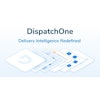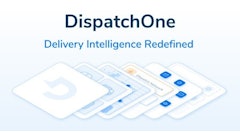
Since its debut in 2015, Amazon Prime Day has set an example for e-commerce companies to create exciting growth opportunities outside of the traditional end-of-the-year holiday season.
Many businesses seek to replicate their success, but the challenge is immense. Capacity must be rapidly scaled up to sort and deliver millions of orders to the new delivery standard: one to two days.
Clearly, traditional forms of order fulfillment would be unable to keep up the pace. Rising congestion levels in the top 100 cities worldwide add to delivery challenges. Apart from on-time deliveries, providing real-time updates and seamless communication have now become the bedrock of a memorable consumer experience. Anything lesser than that, and they are more likely to take their business elsewhere.
It is possible to navigate these challenges with the proper deployment of last-mile technology solutions, namely:
Improvements at scale
When millions of orders have to be dispatched within 48 hours, even the smallest of improvements can make all the difference. Given that last-mile deliveries make for 53% of overall shipping costs, every gallon of fuel, every mile, and every minute saved can go towards fulfilling more orders. But how do we make these savings?
In one word: Automation. Modern dispatch management solutions digitize key on-ground operations to show benefits at scale. Their powerful algorithms can take the millions of orders streaming in and allot them optimally to meet steep delivery targets. And when a captive fleet is not large enough to meet demand, it can automate the outsourcing of logistics delivery to trusted third-party providers at the right price. The main way to turn last-mile delivery from a cost center to a revenue generator is route planning. Powerful algorithms can compute billions of data points and factor in hundreds of real-world constraints to create optimal routes based on diverse real-life constraints. These routes empower drivers on the ground to make more deliveries while saving on empty miles and fuel spent.
From visibility to decision making:
You can’t control a process if you do not know what is happening to it. Similarly, our ability to prevent small problems from spiraling out of control depends on how quickly we get to know the details around them. This is where control tower solutions come in handy. They keep track of the progress of every driver along their route in real-time. Automated notifications help supervisors run a tight ship by alerting supervisors on route deviations, unscheduled stops that could be possible vehicle breakdowns, and other breaches of service level agreements.
Parallelly, the ability to quantify things in the age of data can work wonders. A data-driven approach, where cutting-edge analytics engines compute billions of data points to provide insights, can help better decision-making. Say, for instance, one can easily ensure the most popular products are kept closest to customers, which in turn helps in meeting the staggering customer demands observed during such events.
Deliver an unparalleled consumer experience
If done right, keeping the consumer informed on their order in real time can add to the thrill and anticipation of its arrival. Maintaining seamless communication channels until the completion of delivery makes them feel valued and gives businesses a chance to manage their expectations in the event of unforeseen delays. Keeping customers in the dark, especially when their order is delayed, is a frustrating experience. It can lead to a loss of business. This is why tracking pages are becoming the norm for last-mile deliveries. They keep customers informed of their packages' status with turn-by-turn updates and give them easy ways to communicate with companies on any queries, concerns, and feedback they might have.
The bottom line
Limited-time sales, if done right, are a great way to realize new growth opportunities and cement the sterling reputation of an e-commerce brand. But this is easier said than done. On the one hand, there is tremendous pressure to process the exponential growth in orders and bring consumers a delightful post-purchase experience. On the other hand, there’s a need to ramp up efficiency and keep costs in check. Technology adoption can be transformational as it can address all these challenges and deliver on expectations. It provides meaningful improvements at scale through automation and digitalization of processes, promotes efficiency with end-to-end visibility, and helps realize hidden opportunities through advanced analytics. All of this ultimately delivers customer satisfaction by placing them right at the center of the fulfillment process.

![Pros To Know 2026 [color]](https://img.sdcexec.com/mindful/acbm/workspaces/default/uploads/2025/08/prostoknow-2026-color.mduFvhpgMk.png?auto=format%2Ccompress&bg=fff&fill-color=fff&fit=fill&h=100&q=70&w=100)








![Pros To Know 2026 [color]](https://img.sdcexec.com/mindful/acbm/workspaces/default/uploads/2025/08/prostoknow-2026-color.mduFvhpgMk.png?ar=16%3A9&auto=format%2Ccompress&bg=fff&fill-color=fff&fit=fill&h=135&q=70&w=240)







